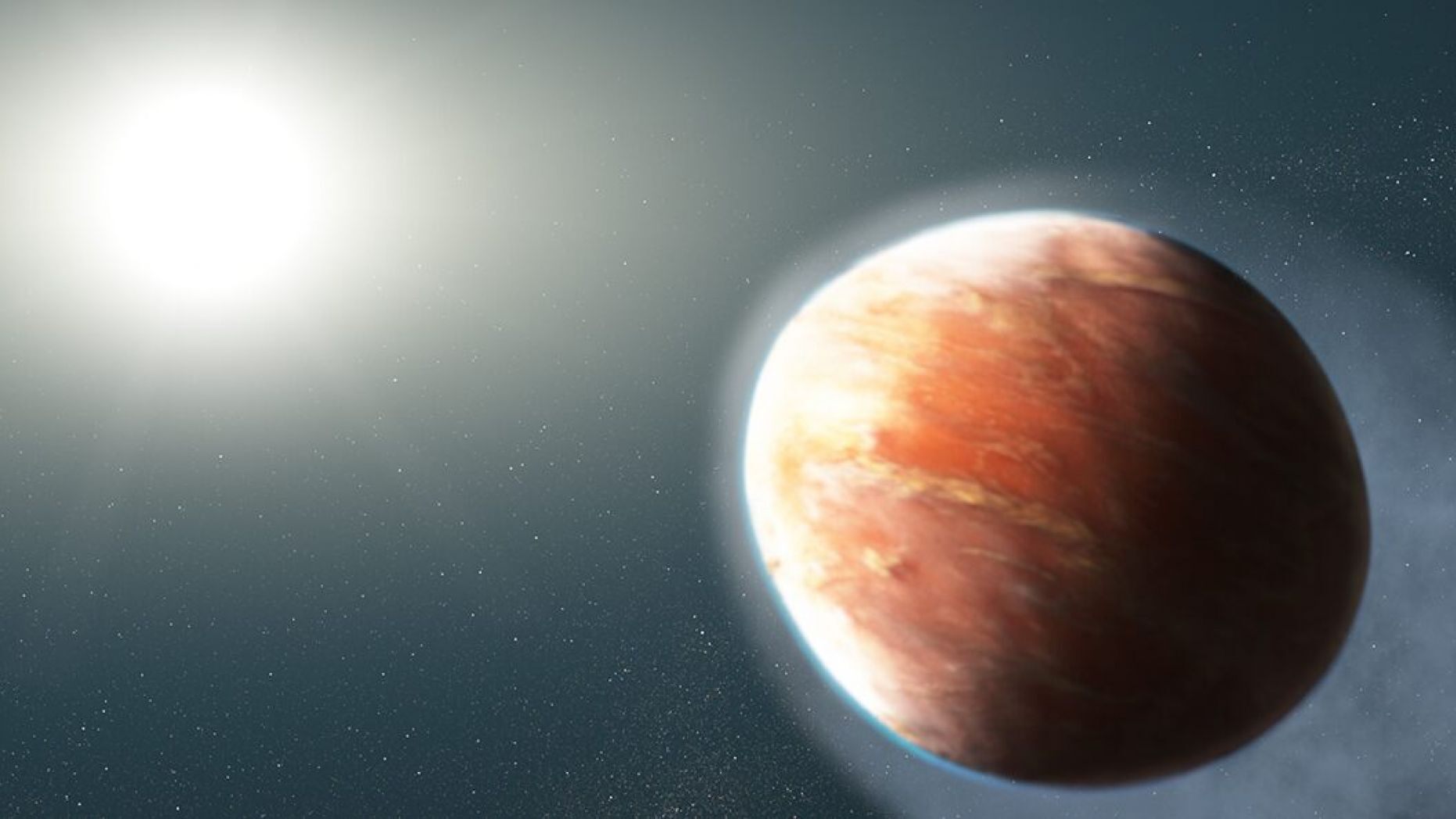NASA discovers ‘extreme’ alien planet that’s shaped like a football

And just in time for the start of football season.
Using NASA’s Hubble Telescope, researchers have discovered a football-shaped exoplanet 900 light-years from Earth that is being described as “hotter than hot.”
Known as WASP-121 b, this “hot Jupiter” is so close to its star that the temperature in its upper atmosphere reaches a blazing 4,600 degrees Fahrenheit. Astronomers were able to figure out the temperature due to heavy metals, such as iron and magnesium, escaping the planet’s atmosphere instead of condensing into clouds, according to a statement announcing the find.
NASA FINDS THREE ALIEN PLANETS, INCLUDING THE ‘MISSING LINK’
“Heavy metals have been seen in other hot Jupiters before, but only in the lower atmosphere,” explained lead researcher David Sing in the statement. “So you don’t know if they are escaping or not. With WASP-121b, we see magnesium and iron gas so far away from the planet that they’re not gravitationally bound.”
The study was published in The Astronomical Journal.
In addition to being sizzling, WASP-121b is so close to its star that “it is on the cusp of being ripped apart,” which is likely causing its football shape.
“We thought we had a chance of seeing heavier elements escaping,” Sing added. “It’s so hot and so favorable to observe, it’s the best shot at finding the presence of heavy metals. We were mainly looking for magnesium, but there have been hints of iron in the atmospheres of other exoplanets. It was a surprise, though, to see it so clearly in the data and at such great altitudes so far away from the planet. The heavy metals are escaping partly because the planet is so big and puffy that its gravity is relatively weak. This is a planet being actively stripped of its atmosphere.”
Most “hot Jupiters” exoplanets are made up of hydrogen, with Sing adding that these types of exoplanets lose the gas “relatively easy.” However, the hydrogen and helium gas on WASP-121b is outflowing, akin to a river, dragging the metals with them, Sing continued. “It’s a very efficient mechanism for mass loss.”
Further research of the planet will happen once the James Webb Space Telescope, which is replacing the Hubble, is up and running after its scheduled launch in March 2021.



 Creators of mankind
Creators of mankind Description of “Tall white aliens”
Description of “Tall white aliens” Where they came from?
Where they came from? About hostile civilizations
About hostile civilizations The war for the Earth
The war for the Earth “Tall white aliens” about eternal life
“Tall white aliens” about eternal life Video: “Nordic aliens”
Video: “Nordic aliens” Aliens
Aliens Alien encounters
Alien encounters The aliens base
The aliens base UFO
UFO Technology UFO
Technology UFO Underground civilization
Underground civilization Ancient alien artifacts
Ancient alien artifacts Military and UFO
Military and UFO Mysteries and hypotheses
Mysteries and hypotheses Scientific facts
Scientific facts


















